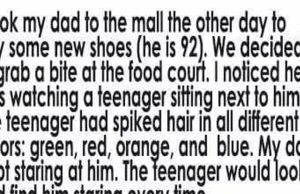
Finding unexplained water puddles around your refrigerator can be frustrating, but this is a relatively common issue with several potential causes. Understanding what’s behind the leak is key to fixing it and preventing it from happening again.
1. Blocked Defrost Drain
One of the most frequent culprits is a clogged defrost drain. Modern refrigerators use an automatic defrost system, which melts ice and directs the resulting water through a drainpipe to an evaporation tray. However, food particles or grime can easily block this drain.
When that happens, the water backs up and leaks out of the fridge instead of draining away properly.
A simple solution is to flush the drain using a mix of warm water and baking soda. Use a turkey baster, pipette, or thin wire to clear the blockage and get the water flowing again.
2. Damaged or Dirty Door Seals
The door gaskets, or seals, help maintain the cold temperature inside your fridge by keeping warm, moist air out. When these seals become worn out or dirty, they no longer close tightly.

This lets warm air seep in, which leads to moisture buildup inside the fridge. The moisture then condenses and forms water that may eventually leak out.
To prevent this, check the seals regularly. Wipe them clean with mild soap and water, and replace them if they appear cracked, loose, or brittle.
3. Issues with the Drip Tray
Beneath your refrigerator is a drip tray, which is designed to collect and evaporate defrost water. Problems arise if this tray becomes cracked, shifted out of place, or overflows due to poor evaporation.
If water is pooling under your fridge, inspect the drip tray. Clean it out and reposition it correctly. If it’s damaged, replacing it is necessary to stop future leaks.
4. Improper Temperature Settings
Another possible cause is incorrect temperature control. If the refrigerator is set too cold, it may cause excessive frost buildup inside the unit. When this frost melts during the defrost cycle, it can produce more water than the system can manage.
To avoid this, keep your fridge temperature between 3°C and 5°C and your freezer at -18°C. This balance keeps your food fresh while preventing excess ice and water buildup.

Conclusion
Water leakage around your refrigerator is usually linked to minor, manageable issues like blocked drains, worn-out seals, an overfilled drip tray, or inappropriate temperature settings.
Regular inspection and cleaning of these components can significantly reduce the risk of water pooling around your appliance. With a bit of maintenance, you can keep your refrigerator running efficiently and your kitchen floor dry.
Man with stomach c.a.n.c.e.r, doctor points out 5 foods left in the refrigerator for a long time

Many people are preoccupied with work and frequently work overtime till late at night, going home hungry. To save time, they frequently buy a significant amount of food on the weekend and store it in the refrigerator, relying on this “reserve” to cover their food needs for the next few days.
Few people realize that this seemingly handy but potentially d.e.a.d.l.y eating habit is a time bomb for their bodies.
The expert emphasized that, while refrigerators can extend the shelf life of food, they are not “safe” in all circumstances.
The following are five sorts of foods that should not be left in the refrigerator for an extended time because they can become the “father” of p.o.i.s.o.n, or a “accomplice” in the causation of can:cer.
1. Green leafy vegetables

Green leafy vegetables including spinach, cabbage, lettuce, etc. contain nitrates. After being stored in the refrigerator for too long, the nitrate in these veggies can be changed to nitrite, raising the r.i.s.k of ca:ncer.
The nitrite concentration, in particular, can grow considerably after 16 hours of refrigeration.
2. Meat thawed many times
When meat is repeatedly thawed and stored in the refrigerator, it can create a high amount of bacteria and hazardous substances, including carcinogens such as P-ammonium dinitrate. The concentration of these compounds increases dramatically with the frequency of freezing and thawing, thereby increasing the r.i.s.k of can:cer following consumption.
To prevent freezing and thawing meat multiple times, put it in little bags and use only what you need.
3. Leftovers

After a lengthy period of storage in the refrigerator, leftovers can grow bacteria and fungi, releasing toxic compounds. Protein-rich foods, such as meat and soy products, are more susceptible to spoilage after prolonged storage.
When these harmful substances enter the human body, they may raise the r.i.s.k of can:cer. As a result, you should eat leftovers as soon as possible rather than storing them for an extended period.
4. Opened milk

Milk and dairy products, including yogurt and cheese, are high in protein and fat. If left in the refrigerator for an extended time after opening the lid/package, the food will quickly spoil and produce a large number of bacteria and microorganisms.
Spoiled dairy products not only have lower nutritional value but can also cause liver damage. As a result, it is best to consume dairy products as quickly as possible after lifting the lid.
5. Pickled foods

Pickled foods such as salted fish, bacon, and kimchi contain a large amount of salt and preservatives added during the production process. After these foods are stored in the refrigerator for a long time, they can grow bacteria, and fungi and produce harmful substances such as nitrite.
Nitrites can be converted into nitrosamines in the human body, a known carcinogen. Long-term consumption can increase the risk of gastrointestinal can:cers such as stomach can:cer.

















